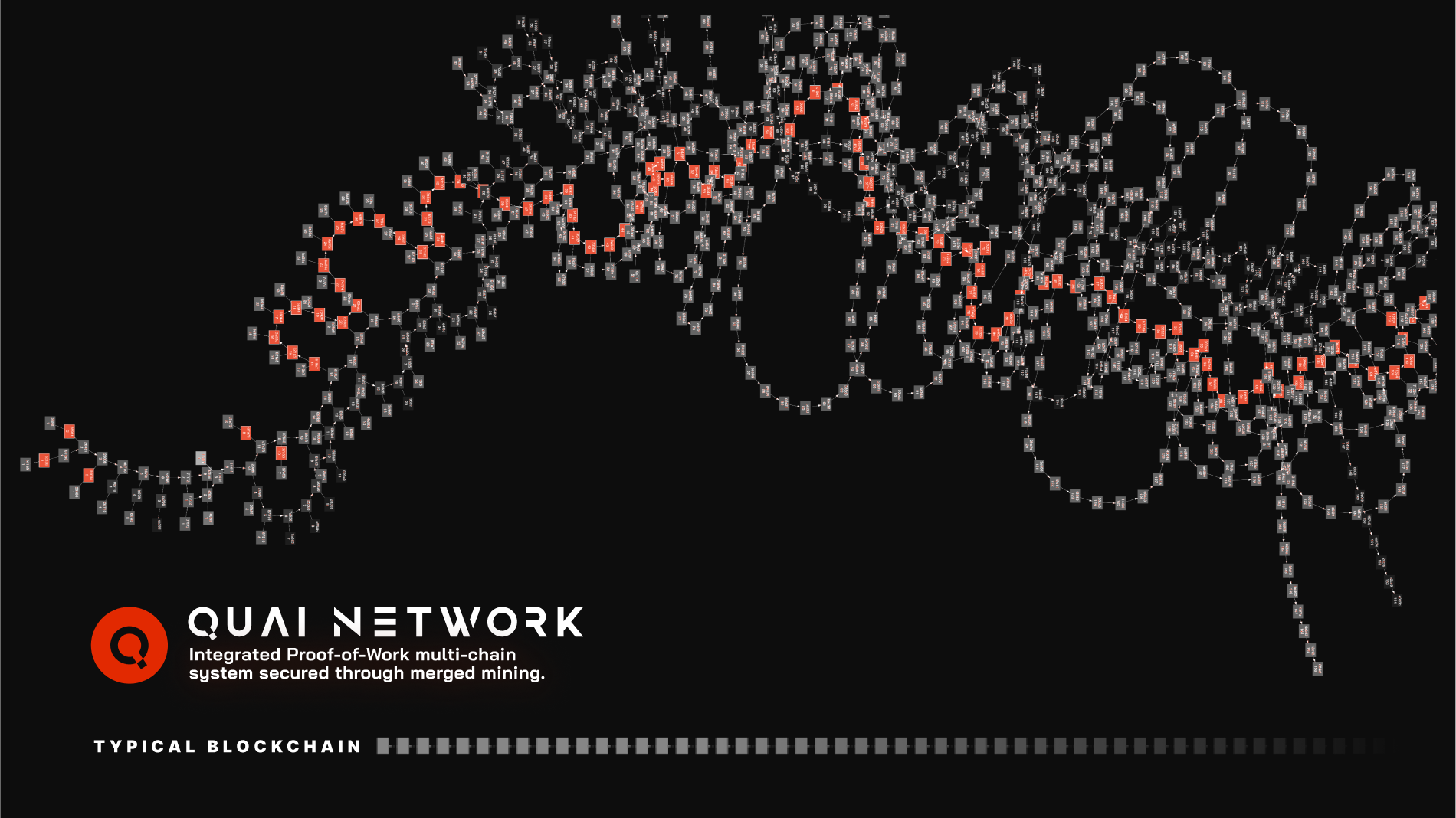From Single-Core to Multi-Core Blockchains
In the early days of computing, processors could only handle one task at a time. Everything had to wait in line, creating bottlenecks that limited performance. The invention of multi-core CPUs changed everything - suddenly computers could process multiple tasks simultaneously, unlocking massive performance gains. Quai brings this same revolution to blockchain technology. Traditional blockchains operate like single-core processors. Every transaction must queue up and wait its turn through one processing channel. During busy periods, this creates massive congestion - like trying to funnel an entire city’s traffic through a single lane. Users experience high fees, long wait times, and failed transactions. The Multi-Core Solution: Quai’s multithreaded execution allows multiple blockchain threads to process transactions in parallel, just like a modern CPU handles multiple tasks simultaneously. Each zone chain operates as an independent execution thread, processing its own transactions while staying synchronized with the broader network. How Quai Achieves This: The breakthrough comes from separating two concepts that traditional blockchains tightly couple: local consistency (everyone in a zone agrees) and global consensus (the entire network agrees). In Quai:- Zones achieve local consensus immediately for their transactions
- Global consensus happens gradually as blocks are woven into the hierarchy
- Users get fast confirmations while maintaining network-wide security

Decoupling Consistency & Global Consensus
To understand Quai’s breakthrough, we need to distinguish between two concepts that traditional blockchains conflate. Consistency means all nodes have the same data - like everyone having the same version of a shared document. Consensus means everyone agrees that version is correct - like getting everyone to sign off on that document. Traditional blockchains force these to happen together. Imagine if every time you wanted to save a document, you had to wait for everyone in your company to review and approve it. That’s how Bitcoin and Ethereum work - nothing can be consistent until everyone agrees, creating massive delays. The Traditional Problem: In single-threaded blockchains, this coupling creates a vicious cycle:- New block is proposed
- Network must reach consensus before data becomes consistent
- Nodes scramble to sync data during consensus process
- Latency delays compound at each step
- Result: Slow confirmations and limited throughput
- Local consistency: Zones can immediately agree on their own transactions
- Progressive consensus: Agreement expands from local to regional to global
- No waiting: Users get instant local confirmation while global consensus happens in background
Segmented State: Divide and Conquer
Traditional blockchains require every node to store everything - every transaction, every account balance, every smart contract. It’s like requiring every library branch to stock every book in the entire library system. This creates massive inefficiency and limits scalability. Quai’s segmented state architecture changes this paradigm entirely. Each zone maintains only its own slice of the global state. Think of it like specialized departments in a company - accounting doesn’t need to store engineering files, and vice versa. This specialization dramatically reduces requirements while maintaining the ability to coordinate when needed. Storage Efficiency: In a network with N zones:- Traditional approach: Every node stores 100% of global state
- Quai approach: Each zone node stores only ~1/N of global state
- Slice nodes: Can choose to run P zones, storing only P/N of total state
- Local transactions: Stay within their zone, no global broadcast needed
- Smart routing: Data only travels where it’s needed
- Reduced congestion: Each zone handles its own traffic independently
- Zone transactions achieve immediate local consensus
- Hash-linked references gradually expand consensus scope
- Global consensus occurs without disrupting local operations
- Users experience instant confirmations with eventual global finality
Parallel Processing: The Performance Multiplier
The true power of multithreaded execution becomes apparent when you see it in action. While traditional blockchains process transactions sequentially - one after another in a single line - Quai processes them in parallel across multiple zones. It’s the difference between a single cashier at a store versus multiple checkout lanes operating simultaneously. Technical Implementation: Quai achieves true parallel processing by giving each zone its own independent write locks and computation resources. This means:- Zone A can process a DeFi swap
- While Zone B handles an NFT mint
- While Zone C executes a gaming transaction
- All happening simultaneously without interference
- No global synchronization delays
- No cross-zone bottlenecks
- Maximum utilization of computational resources
- Full atomicity through PoEM consensus
- Complete security across all zones
- True decentralization with accessible node requirements
